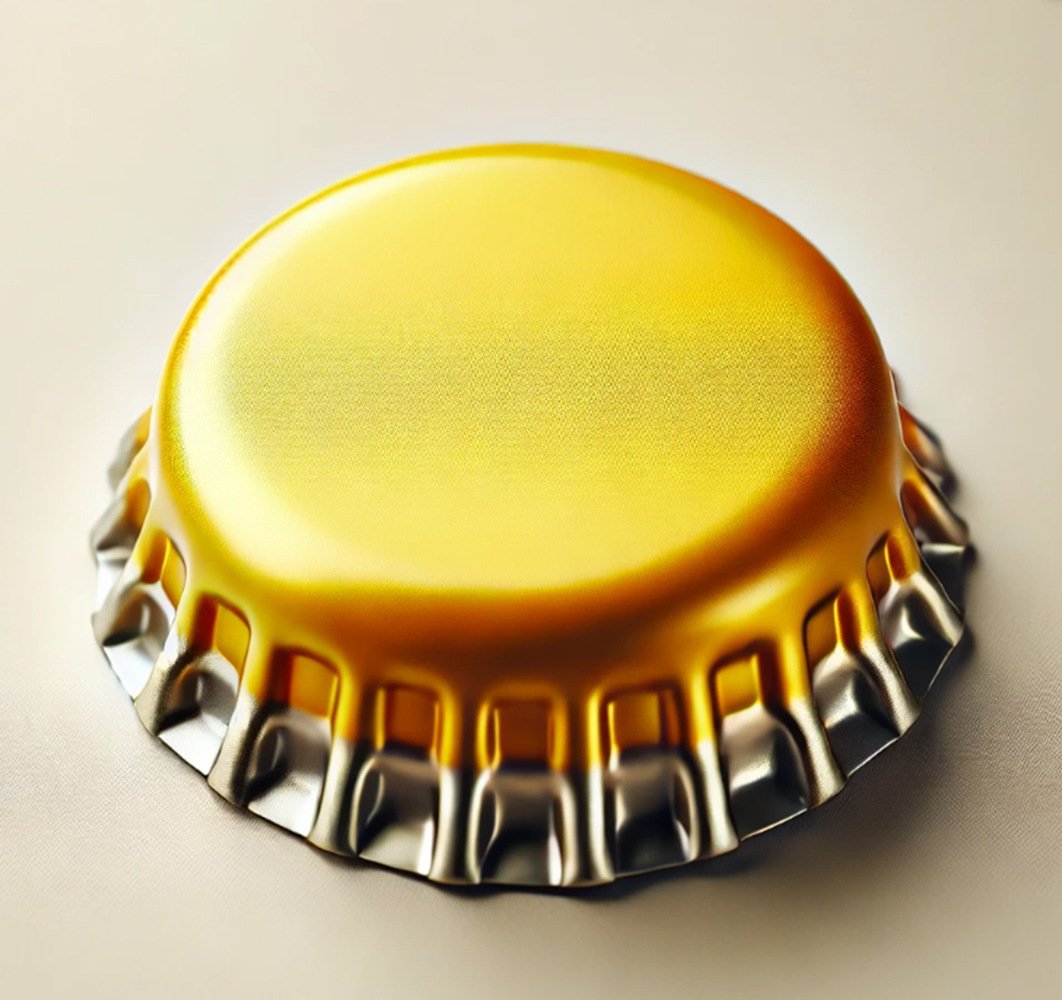Which waste streams end up in residual waste by default, whether rightly or wrongly? In this blog series, our Zero Waste Officer, Milan, takes on the challenge of finding innovative solutions for each office waste stream.
In this blog, he zooms in on a familiar phenomenon during Friday afternoon drinks: bottle caps. The bottles are neatly placed in the crate to be returned for deposit, while the caps almost instinctively end up in residual waste. But is this the logical choice, or is it unnecessary? Milan investigates. Will you join him on this journey?
The material of the beer caps
To determine where beer caps should end up, it is important to know what materials they are made of. A beer cap, also called a crown cap due to its shape with 21 folds, is usually made of steel. Steel, like glass, is a material that can be infinitely reused. At the recycling facility, steel is crushed and then melted down into liquid metal, which becomes the base material for products like bicycles or cans.
The steel of the beer cap is coated with a layer of tin or chrome. This combination of materials ensures that the bottle is tightly sealed. The coating also protects the steel from rust. Sometimes the cap may have an additional layer of plastic—either polyvinyl chloride (PVC) or polyethylene (PE)—on the inside, depending on food safety requirements.
How big is the waste stream from beer caps?
In the Netherlands, we drink an average of 68.6 liters of beer per person, according to research by Kirin Holdings in 2021. In Belgium, the average comes down to 54.4 liters per person. This places us at 22nd and 35th in the world, respectively. Not all of this beer comes from bottles with crown caps; some also comes from cans or from the tap. However, it gives an indication of how large the beer industry is—and, by extension, how significant beer caps in the office can be.
Options for throwing away beer caps
Throwing away beer caps during drinks may seem like the most obvious option, but there are plenty of alternatives. Milan took a closer look. Are you reading along?
Option 1: in PMD?
A beer cap can be disposed of in the separate collection for plastic, metal, and drink containers (PMD) because it is made of metal. However, many companies today only have a PD container (Plastic and Drink Packaging) under the Verpact scheme. In that case, metals are not allowed in it.
Option 2: in the separate collection of scrap iron
Another obvious option is the scrap metal bin. Many companies have these from their production processes. If your company does not have one, experience shows that it usually makes little sense to purchase a bin just for beer caps.
Option 3: residual waste
Residual waste from companies is often incinerated. Beer caps could, in theory, also be intercepted from incinerated residual waste. The waste incinerator reaches high temperatures, melting the metals, which can then be partially extracted from the ash. However, there are too many uncertainties associated with this route: every incinerator operates differently. As a result, there is no guarantee that the beer caps can be extracted afterward.
Innovative Solutions
Of course, our Zero Waste Officer would not be an expert if he had not considered innovative solutions for beer caps.
Idea 1: Hand in the beer bottle for deposit money
As mentioned earlier, glass beer bottles are returned to the supermarket for a deposit. But doesn't the same option apply to beer caps? Milan explored this option and discovered a surprising result: it can be done.
The advantage of this collection method is that it returns to the producer. The beer producer is now faced with something that later becomes waste. Furthermore, this is a logical procedure that requires little effort on the part of the user. The bottles with caps then end up with the manufacturer, who decides what to do with them.
This topic even raises questions about the design of the caps and bottles. With plastic bottles, caps are now attached to the bottle. How could that work with beer bottles? Could the cap be attached to those as well?
Idea 2: hand in for charity
Plastic lids and caps can be handed in for charity, see geleidehond.nl or dopjesactie.be. These organizations deliver the caps to processors and receive an amount per kg. This money is then used, for example, to train guide dogs for the blind. This type of initiative also exists for beer caps.
In Wierden, for example, a diabetes patient collected 26,000 kilos of beer caps, the proceeds of which go entirely to the Diabetes Fund. He continues this action. Also in Brabant, a catering entrepreneur collected beer cups. For a wheelchair for a disabled child, he collected 60 kilos of beer cups.
Another idea or a solution? We'd love to hear it
Returning to the question of whether beer caps unnecessarily end up in residual waste, we can confirm that this is often the case. It’s a shame, because there are plenty of innovative solutions available.
Our Zero Waste Officer is curious about your ideas or solutions for avoiding or sustainably processing these waste streams. Do you have any suggestions? Let us know! Feel free to make a no-obligation appointment or send us an email with your idea or innovation.

Ask our Zero Waste Officer
Are you unsure whether certain items in your office unnecessarily end up in residual waste? Milan is happy to help. Send your question to marketing@milgro.nl, he might look for innovative solutions!
Stay Informed
Want to stay updated on all the latest developments? Follow us on LinkedIn and Instagram, or subscribe to our newsletter. Are you curious about what Milgro can do for your operations and waste processes? Then get in touch.












